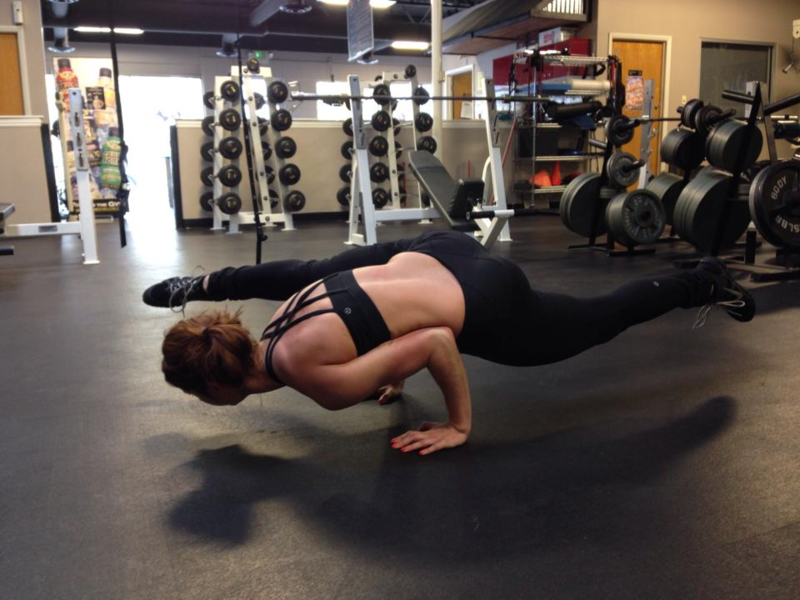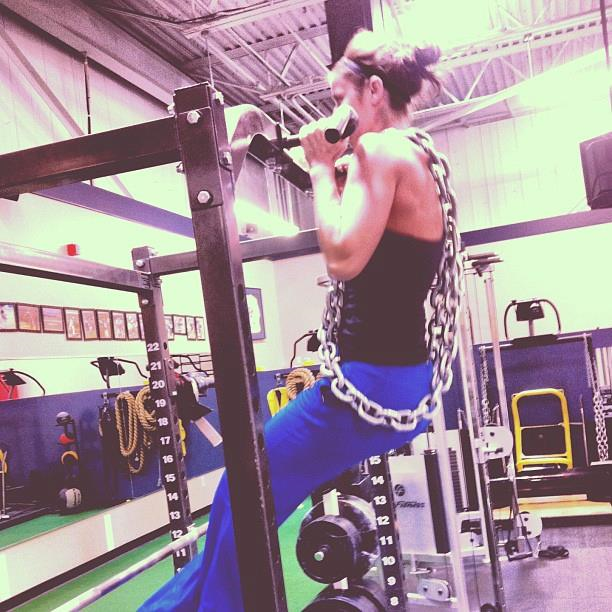by Ashleigh Kast
As I entered my journey into the study and practice of yoga, I was often told to “Be careful!” My lifting friends warned me that yoga was not a well balanced enough practice and would take away from my heavy lifting days. That I couldn’t do both. Even more peculiar, I was apparently the one to be worried about in class. My yoga teachers would check out my muscles and assume I was too stiff and tight to be able to practice very freely. That I’d be at a disadvantage.
And often times in that 100 degree room, as I’d find myself knee to nose in the only full split, surrounded by people who were supposed to be better equipped for this practice; I would wonder where all of these preconceived notions came from.
Because well, I’m not gonna say I’m pretty good at yoga(no matter how much my ego would like to), as yoga for me is more of a spiritual practice, and a place where I can learn to better connect my mind to my movement. And of course, yoga is no kind of contest. But I will say that I really don’t think I’m struggling with my reflexive posture issues any more than the runners, housewives, and corporate go-getters I am usually sharing my practice with.
As the lights went down in class one night, and I made my way to shivasana(the final meditative pose) to reflect on my practice, I wondered how it could be that we have come to assume strong is the opposite of flexible. That to become better at lifting, you need to trade away some of your flexibility. In short, one’s bendyness is exactly indirectly related to ones’s strength and vice versa. This equation did not make sense to me.
Laying on my mat in the dark, I did as I was instructed, and let my thoughts run silently through my head. It was true that I had just completed my most magnificent full wheel to date. I say this because it felt(not looked; who cares what it looked like) easy. I could plug my shoulders down my back, pry my chest out and really open up better than ever before. I felt totally unrestricted and free.
Coincidentally, it was also true that I was at the end of a successful power lifting cycle in the gym. I had just turned all of my previous 1 rep max PR’s to doubles. I was not just moving really well; I was lifting reallyheavy.
I have several friends who joke that I can never just follow a training program. They are just teasing me but their claims are quite accurate. Whenever I am given a program or I write a cycle for myself, I mess with it.
As I start to feel out the program, I change the reps. I add and subtract accessory lifts. I swap days. I change whatever I want out of it because I train intuitively.
I listen to what my body says before, during, and after my workouts. And in turn, it tells me exactly what I need and don’t need from what I have programmed. It usually takes me about two weeks of experimenting to really iron out the final plan. So that everything clicks and connects on the platform, and my yoga mat.
And this speaks to the importance and power of balance in any good training plan. If I am lifting heavy, but paying respect to the balance of movement patterns in my plan, I get stronger. If I get stronger, I get more bendy.
As Charles Poliquin says, we don’t know exactly why this is true (most effective way to improve flexibility). But what I do know, is that when everything is in good working order on the weight smashing side, the brakes come off on the folding myself into advanced asanas side. My brain gives me the green light to bind myself in side angle and stand in a tall and proud bird of paradise, just as easily as lifting a barbell off the floor.
The other way around? I can confidently say without too much scientific study that you’re not going to necessarily get stronger by becoming more bendy. I have seen many yogis who can fold themselves into all kinds of pretzel-y shapes, but it doesn’t mean a thing when I ask them to hold a weight over head.
That’s probably a whole other blog post; but think about this: When you get to the end of a training program, are you moving better andfeeling better too? Do you lose your ability to fold into a comfortable back bend or does it get even more euphoric? Do yourself a favor and jump into a yoga class(or whatever your favorite mobility measure is) before and then after your next lifting cycle. Pretty solid and simple test for realizing how effective your training programs are, not only to your strength goals, but more importantly… your overall health.
#bendystrength #sophisticatedstrength
Check out more of Ashliegh’s awesomeness at her blog: http://sophisticatedstrength.blogspot.com/



Love you post and I must agree wit you since I’ve started lifting weights my muscles have become stronger to support my currently level of flexibility. But when I was only training flexibility I had numerous issues! Still do but I have hypermobile joints ?. But I was wondering do you just do a yoga class for you flexibility training? And how many days do you train flexibility? I’m just finding it hard to find that balance so I’m currently a little bit stiff but I know my body is still able to move in different planes and motions.
Hey Beckie!
There are many ways to train flexibility. Usually you would find a flexibility program that matches your goals.
Yoga can be a lot of different things, depending on the style and teacher. It could be flexibility, it could be some strength work, traditionally it could be a moving meditation.
I would caution against working on more flexibility when your joints are already hypermobile — that usually leads to more hypermobility.
In general, you want to look to create strength and stability within the range of motion you have, to protect your joints. These days, this *active range of motion* is usually called “mobility training.”
It’s the difference between stretching your hamstrings and adductors passively, vs working towards doing cossack squats with weight: https://youtu.be/f6BAofKiLjs
Again, the idea being to create strength through range of motion.
Depending on how hypermobile you are, you probably want to seek out a good Physical Therapist for recommendations on if flexibility training is something you should pursue, and what movements are safe or not safe for you.
When in doubt, always consult a good physical therapist!